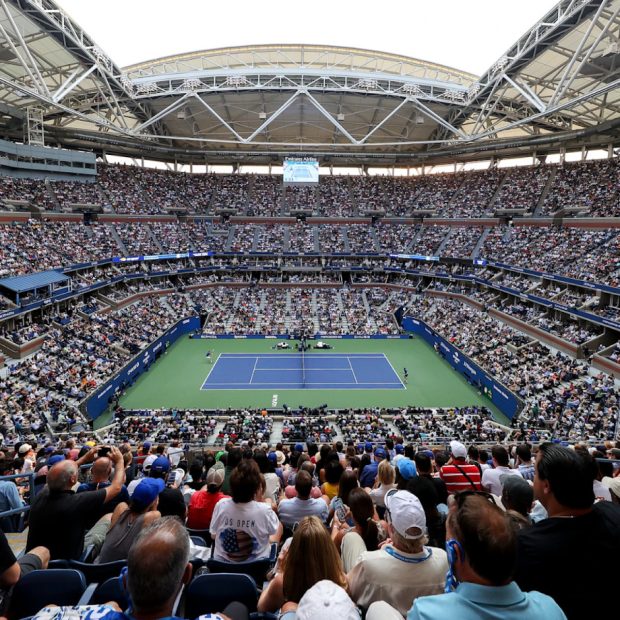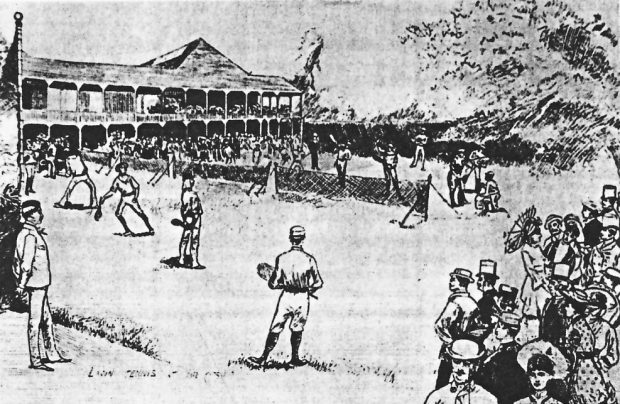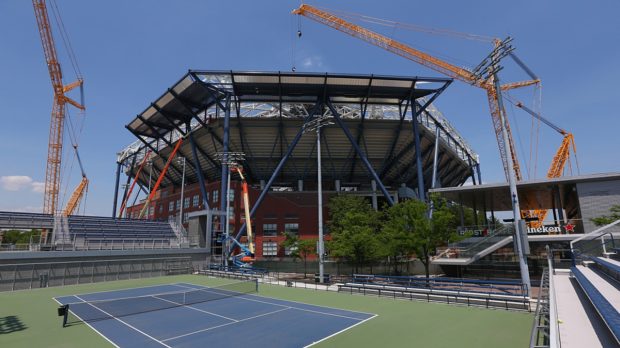
For enthusiasts of both tennis and American history, the development of the US Open tournament and the iconic courts that have witnessed the brilliance of tennis legends over the centuries is a captivating journey. Our detailed exploration is presented in this article.
The prestigious US Open tournament has transformed from its origins in an elite Newport Rhode Island club to the Forest Side Hills West Side Tennis Club, eventually finding its current home at Flushing Meadows-Corona Park. Notably, the tournament holds an intriguing connection to the 1964 World’s Fair.

A pivotal moment in the tournament’s history occurred in 1911 when a group led by Carl H. Behr successfully petitioned to move the event to New York City. The West Side Tennis Club in Forest Hills, Queens became its home, with only a brief hiatus in the 1920s. The club’s rich history includes hosting the Davis Cup and enduring as the tournament venue until 1977.
READ: Historical Treasures of Manhattan: New York in Details
Founded in 1892 at Central Park’s West Side, the Westside Tennis Club initially boasted three clay courts. Over the years, it expanded, first near Columbia University and later to 238th Street and Broadway. Noteworthy for hosting the Davis Cup, the club recognized the need for expansion, leading to the purchase of a permanent site in Forest Hills, Queens, in 1912.
The move to Forest Hills marked an era of grandeur, featuring a Tudor-style clubhouse and the construction of a 14,000-seat horseshoe-shaped stadium. The Forest Hills venue witnessed not only remarkable tennis but also became a stage for legendary concerts, including performances by Frank Sinatra, Bob Dylan, and the Beatles.
In 1978, the US Open moved to the USTA National Tennis Center in Flushing Meadows, Queens, transitioning from clay to a hard surface. The journey to this new location was inspired by the discovery of the old Singer Bowl Stadium, originally built for the 1964 World’s Fair.
Preceding the USTA’s move, the Singer Bowl Stadium underwent a remarkable transformation. It was divided into two stadiums, giving rise to Louis Armstrong Stadium and Grandstand Stadium. Notably, Grandstand Stadium currently holds the third-largest capacity at the US Open with 8,125 seats.
READ: Struggles of New York’s 65,000 Food Delivery Couriers: Real Heroes
Louis Armstrong Stadium, the second-largest in capacity, underwent a $600 million renovation, culminating in the unveiling of a new retractable roof. This stadium, with a seating capacity of 15,000, stands as the world’s first tennis arena boasting natural ventilation along with its innovative roof.

READ: Understanding Credit Scores: Renting Features in NYC
The US Open’s journey through time and its evolution across various historic venues paint a rich tapestry of tennis history. From Newport’s grass courts to the modern marvels of Flushing Meadows, each chapter contributes to the tournament’s enduring legacy.
Like us on Facebook for more stories like this: